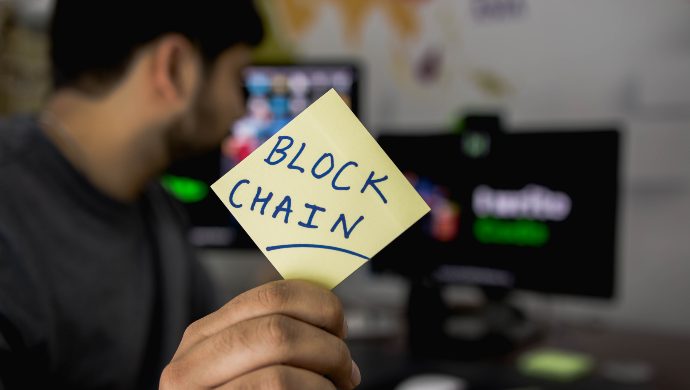Whether it is highlighting quality companies or discussing macro-trends, these 10 articles will catch you up on Southeast Asia’s blockchain ecosystem

The e27 contributor programme has become a source of fantastic articles about the Southeast Asian startup ecosystem.
In this article, we wanted to highlight the stories focussed on blockchain. Some articles get into specific companies, others talk about policies and a few discuss problems (and solutions) within the community. This is a great resource for catching up with the blockchain industry!
If you would like to be a contributor, do not hesitate to submit an article here.
7 Singapore-based blockchain projects that are having global impact
As the headline suggests, this article breaks down seven blockchain companies that are making an impact in the real world. Written by Christopher Quek, this article features MVL, Indorse, Whatshalal, Enjin, Digix, Rate3 and Bluzelle.
Without explicitly stating it, this article points out that blockchain startups are tackling a diverse set of problems.
What is an ICO, STO and TSO?
Author Anson Zeall is a startup veteran and the co-founder and CEO of CoinPip, a blockchain-based payments company. When it comes to an in-depth understanding of blockchain, it is difficult to beat the knowledge of Zeall.
In the article, he explains the difference between an ICO, STO and TSO. Here is a quick definition of each.
ICO: Initial Coin Offering. The process of selling tokens that can be used for a service (or sold) as a form of financing the company.
STO: Securitised Token Offering. It’s essentially an ICO with an underwriting mechanism. Companies can sell tangible assets (including revenue) that is attached to these tokens.
TSO: Tokenised Security Offering. This is process of tokenising “things” and it is still a cutting edge fundraising model.
Why the fall of bitcoin will accelerate the development of distributed ledger technology
2018 was the year the cryptocurrency market collapsed and Edgar Seah argues that for distributed ledger technologies to grow, it will by crucial to move beyond cryptocurrencies.
Seah says, “We, as a community, cannot allow the ‘crypto winter’ to distract from the task of rebuilding confidence in the technology and that begins by changing the narrative to one of continuous development and enabling mass adoption.”
Walking the walk: Three Asian crypto companies gaining real-world traction
One of the core criticisms of the blockchain industry is that a significant amount of the companies don’t have a viable product. This is why Mike Gelacio wanted to highlight three companies that can be used right this instance.
The startups are QTUM (a smart-contracts company), Pundi X (a POS system) and Bitmain (a mining company).
A quick guide to digital marketing a blockchain project
Blockchain startups have to market their companies just like any other startup, but they also have a unique community that requires different strategies. Norm Bond walks readers through the strategies that stand out in the blockchain community.
Some of them include manufacturing cool, courting controversy and pursuing airdrops for tokens.
How stable are stablecoins?
Stablecoins are often promoted as a safe alternative in the highly volatile cryptocurrency market. Essentially, they are pegged to real-world assets (typically a fiat currency) and their price fluctuates according to the peg, rather than, say, the price of Bitcoin.
However, stablecoins are far from perfect and Luke Fitzpatrick breaks down some of the very legitimate faced by the technology.
Want to make blockchain mainstream? Then speak the mainstream language
One of the problems with the blockchain industry is that it feels unapproachable to regular people. The technology actually isn’t overly complicated, but the discussions get so wrapped up in jargon they can often feel like it requires a phd just to participate.
Natalia Tokar points out that, “Help people understand why you care. Explain what exactly your solution will change, but in their language.”
10 ways blockchain can help overcome the biggest challenges in commercial leasing
To understand how blockchain can change the world, sometimes it is wise to get into specific industries and how it impacts their sector. Entrepreneur Ivan Lim breaks down how the technology is impacting his world — the commercial leasing process.
Blockchain largely helps eliminate the painful documentation process, with knock-on benefits like privacy improvements, decreasing the environmental impact, lowering intermediary costs and decreasing the turnaround time.
Blockchain is paving the way for something new: Smart Companies
Companies often take up blockchain as a means to reward their customers, but in doing so have helped improve their own internal structures. Whether it is trying to understand what customers want, navigating the necessary KYC processes or complying with government regulations, the blockchain has resulted in a lot of companies becoming smarter companies.
James Nguyen writes, “Simply put, Smart Companies are globally-connected and blockchain-compatible companies with their own legal identity.”
Singapore a honeypot for cryptocurrency and blockchain projects, data shows
At the time of publishing, Singapore was home to 634 companies that were tangentially related to the blockchain industry. This article by Spencer Yang dove into the public records and found that Singapore saw a huge boom in incorporations towards the end of 2017 that levelled-off (but did not dip) in 2018.
Singapore (along with Thailand and the Philippines) are positioning themselves as supportive governments for the blockchain, and this article suggests companies are noticing.
—
Photo by Hitesh Choudhary on Unsplash
The post The 10 most read blockchain e27 Contributor articles appeared first on e27.